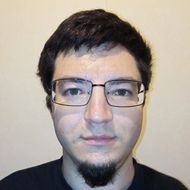Russian Scientists Demonstrate How Disorder Contributes to Emergence of Unusual Superconductivity

Researchers at HSE University and MIPT have investigated how the composition of electrons in a superconductor influences the emergence of intertype superconductivity—a unique state in which superconductors display unusual properties. It was previously believed that intertype superconductivity occurs only in materials with minimal impurities. However, the scientists discovered that the region of intertype superconductivity not only persists but can also expand in materials with a high concentration of impurities and defects. In the future, these superconductors could contribute to the development of highly sensitive sensors and detectors. The study has been published in Frontiers of Physics.
In ordinary materials, there is always at least some resistance, a property that hinders the flow of electric current and results in energy loss. However, certain materials, when cooled to extremely low temperatures, transition into a state where resistance is entirely eliminated. This state is known as superconductivity, and the materials exhibiting it are called superconductors.
When a material enters a superconducting state, it completely expels external magnetic fields, such as those generated by electromagnets or current-carrying conductors. However, if the external magnetic field becomes too strong, the superconductor loses its properties and reverts to its normal state.
Superconductors are traditionally classified into two types. Their classification into type I or type II depends on the material's behaviour in a magnetic field and the value of the Ginzburg–Landau parameter, which, in turn, depends on the material's characteristics as well as the presence of impurities and defects. If it is below a certain value, the material is classified as a type I superconductor; if it is above that value, it is classified as a type II superconductor. In type I superconductors, the magnetic field is expelled from the material until its intensity reaches a critical value. After that, the field penetrates the material, and superconductivity is lost. In type II superconductors, the situation is different: the magnetic field begins to penetrate once the field strength exceeds a minimum threshold, but superconductivity is maintained. The field penetrates in the form of vortices—narrow current-carrying tubes, within which a magnetic field is present. These vortices form an ordered lattice structure.
However, there is a narrow region around the critical value of the Ginzburg–Landau parameter where superconductivity exhibits intermediate properties between type I and type II. This state is known as intertype superconductivity. Unusual magnetic field configurations differing from lattices arise in this state, including vortex clusters, chains, and giant vortices, which give rise to new magnetic properties distinct from the classical ones.
Initially, intertype superconductivity was observed only in pure superconductors with minimal impurities. However, a recent study by scientists at the HSE MIEM Centre for Quantum Metamaterials and the MIPT Centre for Advanced Methods of Mesophysics and Nanotechnology revealed that the region of intertype superconductivity is maintained in superconductors with a high concentration of impurities and defects. This is possible in multiband superconductors, where multiple 'types' of electrons with different properties coexist. Electrons from different energy bands respond differently to impurities: some are more affected, while others are less so. Moreover, the extent of interaction with impurities can be controlled, for instance, by irradiating the material with ions, which allows for the expansion of the intertype superconductivity region.
The scientists' findings contribute to the current understanding of superconductivity types and how their properties change under different conditions. This is crucial for the effective use of superconductors in cables and high-power magnets, as the current and magnetic properties of a superconductor depend on its type. It is also valuable for the development of new, highly sensitive devices.
'The study broadens our understanding of superconductivity and the classical classification of superconductors, which has been around for about 70 years. We have shown that the combination of disorder and multiband effects fundamentally alters the properties of superconductors and opens up the possibility of exploring rare and exotic superconducting states. Since the magnetic field configurations in intertype superconductivity are sensitive to temperature and current parameters, such superconductors could be used in highly sensitive sensors and detectors in the future,' according to Pavel Marychev, Research Fellow at the HSE Centre for Quantum Metamaterials.
See also:
Scientists Test Asymmetry Between Matter and Antimatter
An international team, including scientists from HSE University, has collected and analysed data from dozens of experiments on charm mixing—the process in which an unstable charm meson oscillates between its particle and antiparticle states. These oscillations were observed only four times per thousand decays, fully consistent with the predictions of the Standard Model. This indicates that no signs of new physics have yet been detected in these processes, and if unknown particles do exist, they are likely too heavy to be observed with current equipment. The paper has been published in Physical Review D.
HSE Scientists Reveal What Drives Public Trust in Science
Researchers at HSE ISSEK have analysed the level of trust in scientific knowledge in Russian society and the factors shaping attitudes and perceptions. It was found that trust in science depends more on everyday experience, social expectations, and the perceived promises of science than on objective knowledge. The article has been published in Universe of Russia.
Scientists Uncover Why Consumers Are Reluctant to Pay for Sugar-Free Products
Researchers at the HSE Institute for Cognitive Neuroscience have investigated how 'sugar-free' labelling affects consumers’ willingness to pay for such products. It was found that the label has little impact on the products’ appeal due to a trade-off between sweetness and healthiness: on the one hand, the label can deter consumers by implying an inferior taste, while on the other, it signals potential health benefits. The study findings have been published in Frontiers in Nutrition.
HSE Psycholinguists Launch Digital Tool to Spot Dyslexia in Children
Specialists from HSE University's Centre for Language and Brain have introduced LexiMetr, a new digital tool for diagnosing dyslexia in primary school students. This is the first standardised application in Russia that enables fast and reliable assessment of children’s reading skills to identify dyslexia or the risk of developing it. The application is available on the RuStore platform and runs on Android tablets.
Physicists Propose New Mechanism to Enhance Superconductivity with 'Quantum Glue'
A team of researchers, including scientists from HSE MIEM, has demonstrated that defects in a material can enhance, rather than hinder, superconductivity. This occurs through interaction between defective and cleaner regions, which creates a 'quantum glue'—a uniform component that binds distinct superconducting regions into a single network. Calculations confirm that this mechanism could aid in developing superconductors that operate at higher temperatures. The study has been published in Communications Physics.
Neural Network Trained to Predict Crises in Russian Stock Market
Economists from HSE University have developed a neural network model that can predict the onset of a short-term stock market crisis with over 83% accuracy, one day in advance. The model performs well even on complex, imbalanced data and incorporates not only economic indicators but also investor sentiment. The paper by Tamara Teplova, Maksim Fayzulin, and Aleksei Kurkin from the Centre for Financial Research and Data Analytics at the HSE Faculty of Economic Sciences has been published in Socio-Economic Planning Sciences.
'Even among Geniuses, Luck Plays a Role in Winning a Nobel Prize'
Denis Bodrov studies particle physics and works at one of the four electron–positron colliders in the world. In this interview with the HSE Young Scientists project, he talks about his efforts to go beyond the Standard Model, discusses tau leptons, and shares his affection for Moscow.
Larger Groups of Students Use AI More Effectively in Learning
Researchers at the Institute of Education and the Faculty of Economic Sciences at HSE University have studied what factors determine the success of student group projects when they are completed with the help of artificial intelligence (AI). Their findings suggest that, in addition to the knowledge level of the team members, the size of the group also plays a significant role—the larger it is, the more efficient the process becomes. The study was published in Innovations in Education and Teaching International.
New Models for Studying Diseases: From Petri Dishes to Organs-on-a-Chip
Biologists from HSE University, in collaboration with researchers from the Kulakov National Medical Research Centre for Obstetrics, Gynecology, and Perinatology, have used advanced microfluidic technologies to study preeclampsia—one of the most dangerous pregnancy complications, posing serious risks to the life and health of both mother and child. In a paper published in BioChip Journal, the researchers review modern cellular models—including advanced placenta-on-a-chip technologies—that offer deeper insights into the mechanisms of the disorder and support the development of effective treatments.
Using Two Cryptocurrencies Enhances Volatility Forecasting
Researchers from the HSE Faculty of Economic Sciences have found that Bitcoin price volatility can be effectively predicted using Ethereum, the second-most popular cryptocurrency. Incorporating Ethereum into a predictive model reduces the forecast error to 23%, outperforming neural networks and other complex algorithms. The article has been published in Applied Econometrics.



